Kathryn Hally
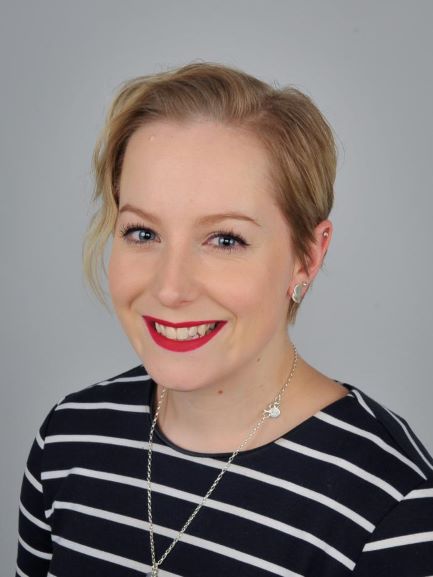
Since being involved in a CREST investigation in 2010 and being selected to attend the London International Youth Science Forum later that year, Kathryn has come a long way in a short time and has just recently completed her PhD.
At college, even in my junior secondary years I was always in my element studying science. One of my science teachers at St Oran's College recognised this, and was hugely helpful in pushing me to complete a Bronze and Silver CREST award. Both projects were based around hydroponics, which can be a cheap and simple way of growing food. I was interested in finding out whether I could substitute the nutrient solution that is usually used in hydroponics for salt water, thus bringing down the cost of the operation. If the growth of the lettuce was similar with salt water, a very simple hydroponics set-up with salt water could provide a cheap solution for growing food. This was an awesome experience, and my first proper introduction to conducting my own experiment.
Hydroponics project 2008: This was taken during my experiments for my Silver CREST award
In 2010 I also had the incredible opportunity of being selected by Royal Society Te Apārangi to attend the London International Youth Science Forum (LIYSF). This is a two-week conference based at Imperial College London, and is a stunning opportunity for senior secondary school students to learn from world-class mentors. This conference, which united young scientists from many different countries and cultures, was an opportunity to meet and discuss some serious global problems. The aim of LIYSF is to encourage collaboration and commitment, as global issues cannot be resolved without these two elements. The two weeks were packed with lectures and demonstrations, interspersed with a number of sightseeing trips. In particular, I have always remembered the lecture given by Keith Martin, Professor of Ophthalmology, University of Cambridge, who discussed new technologies for restoring sight, including gene and stem cell therapy. Of all of the lectures that we attended, on topics ranging from chemistry to mathematics to environmental science, this one had the biggest impact on me. Hearing lecturers like Professor Martin discuss how basic science could impact clinical decision-making was hugely instrumental in my decision to pursue biomedical science at university.
CERN 2010: This was taken at CERN, in front of a mock-up of the Large Hadron Collider (LHC)
I was also lucky to spend the week following LIYSF travelling to Geneva to visit the European Organization for Nuclear Research (CERN), a European research centre that hosts the largest particle physics laboratory worldwide. I was blown away by the scale of their research facility – it is a fantastic hub of high-quality research and it was very inspiring to be able to visit. Not to mention, I saw the Mona Lisa and the Eiffel Tower on our way to and from Geneva, which were both amazing experiences! For me, LIYSF and CERN Discovery was also a journey of self-confidence and personal growth, and I will always be hugely grateful to Royal Society Te Apārangi for this opportunity.
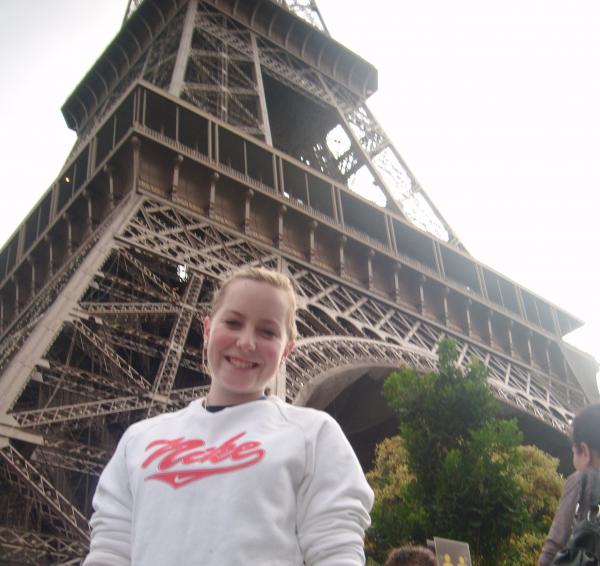
Eiffel Tower 2010: As a part of CERN Discovery, we visited the Eiffel Tower
Very soon after attending LISYF, I was back in Wellington applying to study a Bachelor of Biomedical Science at Victoria University of Wellington. For me, the choice of which degree to study at university was an easy one, and was certainly a product of the opportunities that I was able to take up during college. During my degree, I really enjoyed working with clinical data as well as basic science data, and wanted to pursue working in the translational research space (essentially the ‘translation’ of bench side methodologies into the clinic and community).
I knew that I wanted to pursue postgraduate study, as this would allow me to get stuck into designing, optimising and conducting my own experiments. So, I enrolled to complete an Honours year at Victoria University of Wellington, and worked alongside Associate Professor Peter Larsen and Dr Scott Harding from the Wellington Cardiovascular Research Group (WCRG). Cardiovascular disease remains the leading cause of mortality and morbidity in New Zealanders and, despite the implementation of good secondary prevention strategies, a proportion of patients will continue to experience recurrence of their cardiovascular disease. The overall aim of the WCRG is to improve the health outcomes for patients that experience an acute myocardial infarction (more commonly called a heart attack) by better managing a patient’s risk of recurrent cardiovascular events. We aim to achieve this by undertaking a range of basic science, translational and clinical research projects. I started my Honours project in 2014, and my project involved designing a methodology for identifying ‘super-activated’ platelets in blood samples. The literature suggested that this sub-group of platelets are highly pro-thrombotic (promoting clotting), and we hypothesized that a higher count of ‘super-activated’ platelets may contribute to excessive clotting during a heart attack. Working with the WCRG was equal parts challenging and rewarding. Most importantly for me, being able to work alongside PhD students convinced me that this was the path that I wanted to take as well.
I was chuffed to receive a Doctoral Scholarship from Victoria University at the end of my Honours year, and I was excited to continue working with the WCRG. At the time, I think I took for granted how easy I found transitioning through all of this postgraduate study – I had found something that I was so passionate about, and I think that simple fact made these decisions so much easier to make.
Graduation Day
So, I started my PhD at the start of 2015. It helped that my PhD was a mixture of immunology and cardiovascular research – I enjoy working on how aspects of the immune response could inform us on how well patients recover from a heart attack. I investigated the expression and functionality of platelet Toll-like receptors (TLRs). TLRs are a ‘first line’ of defence of the innate immune system, and we investigated how these receptors may contribute to the thrombotic and immune responses of platelets during a heart attack. My PhD (and particularly my first year) was the steepest learning curve that I have had: I learnt how to problem-solve and how to manage my time, I learnt how to write papers (and learn how to deal with rejection from journals – try and try again!), how to write grants and seek ethics approval. Most importantly, I learnt how to communicate my research to my peers and, throughout my PhD, I have become a more confident and independent individual. I handed in my PhD at the start of 2018, and defended it in May, so we’re all wrapped up!
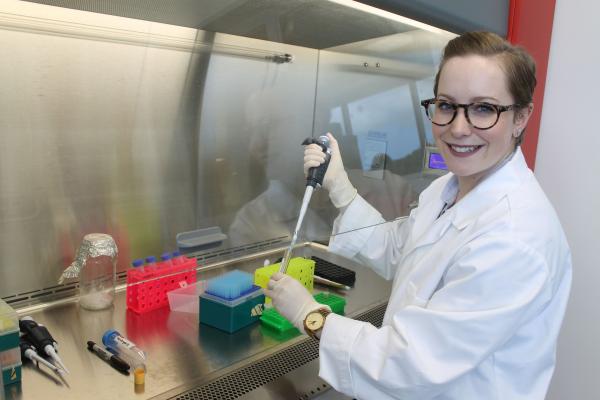
Working in the lab
I have been working as a Postdoctoral Fellow within the Department of Surgery and Anaesthesia at the University of Otago, Wellington Campus. I am still hugely passionate about working in the translational cardiovascular research space, and continue to work as a part of the WCRG. My research this year has focused on the utility of markers of neutrophilic inflammation (neutrophiles are a type of immune cell) for predicting recurrent cardiovascular disease in patients that have had a heart attack. This is with the view that blood-based markers of inflammation may aid in splitting a patient group into different risk levels, and identifying high-risk individuals in this way can facilitate better management of their cardiovascular disease. I am very excited about this research, particularly because this project has a huge focus on how we can improve the health outcomes of these patients. This is an absolutely fascinating area to work in, so watch this space!
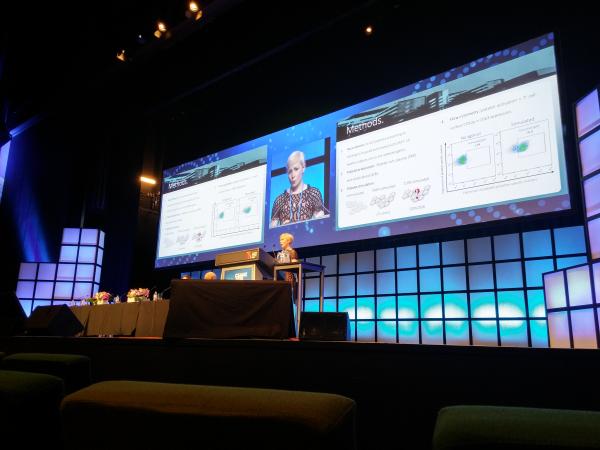
CSANZ Melbourne 2015: I presented my first PhD project at the Cardiology Society of Australia and New Zealand (CSANZ) Conference in Melbourne, 2015.
In putting this profile together, I dug out my notebook that I took with me to LIYSF. On one of the last pages, I wrote down a quote from Carl Sagan, the famous American astronomer and, since reading it recently, this quote has stuck with me: “Science is a way of thinking, much more than it is a body of knowledge”. Pretty inspirational stuff for my (then) 17-year-old self! And, I agree. I think all scientists try to embody this quote as much as we can, and the science that we produce is so much better for it.
I want to end with discussing the biggest lesson that I have learnt throughout my time studying science. Historically, I have always found it difficult to admit that I don’t know something, and I often tried to problem-solve all by myself. This came from not wanting to look ignorant or wrong, and I have found this habit hard to shake. But, I have learnt over the years that none of us are experts in everything, and that science (above all else) should be collaborative. It is the only way of filling all of the gaps in our current knowledge. As they say, a problem shared is a problem halved, and science is no exception. I encourage everyone (not just those in science) to share their ideas and problems, and foster collaboration everywhere you can. Don’t shy away from criticism, treat it as something valuable: taking criticism on board is just another way that you can improve your science.
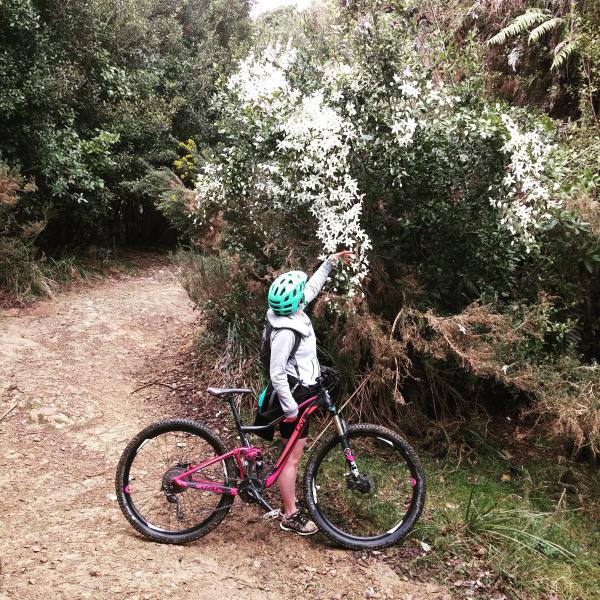
Riding in the Akatarawas: In my spare time, I love mountain biking. This was taken on a day trip into the Akatarawas, in the Tararua Range.
